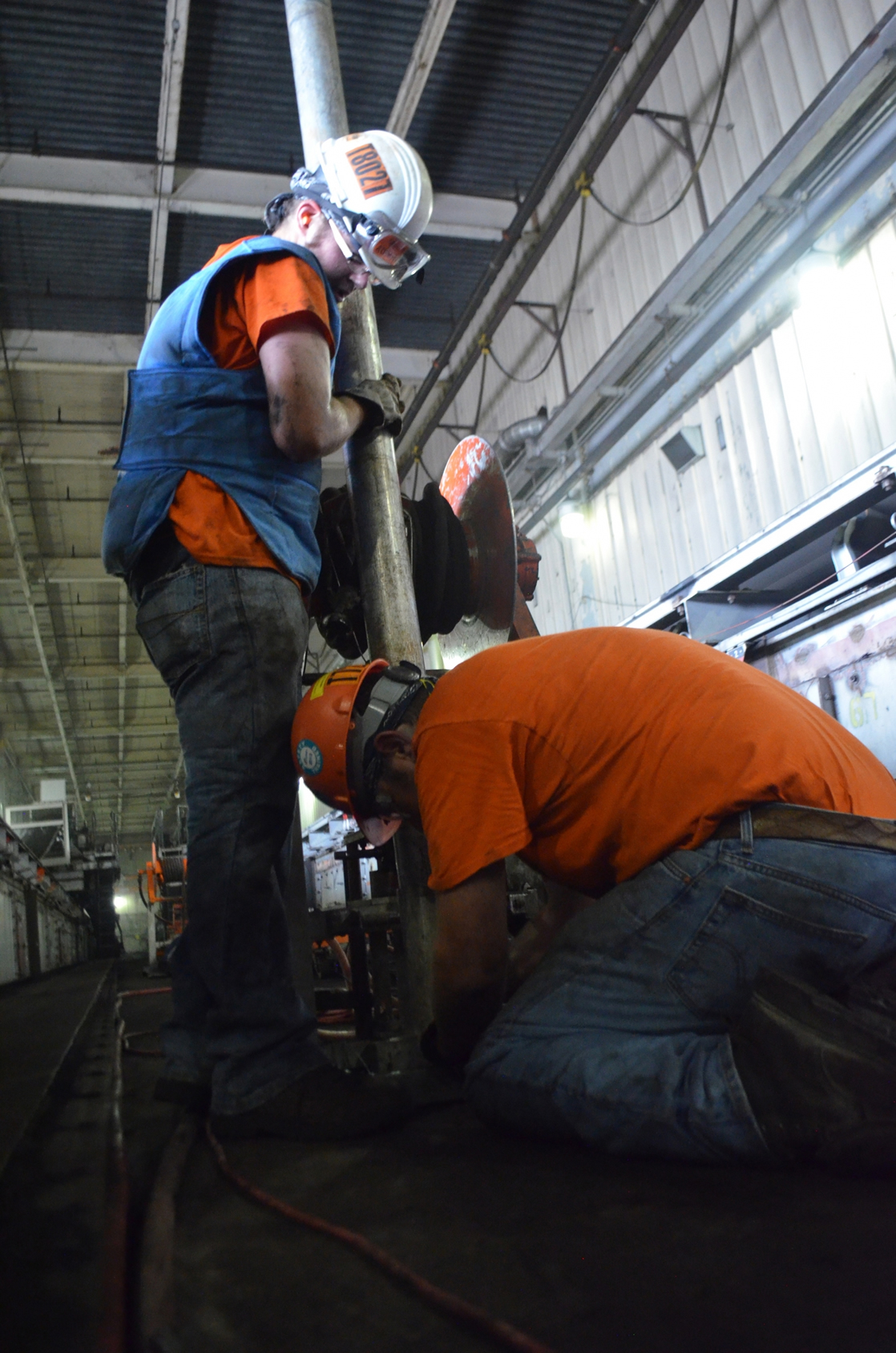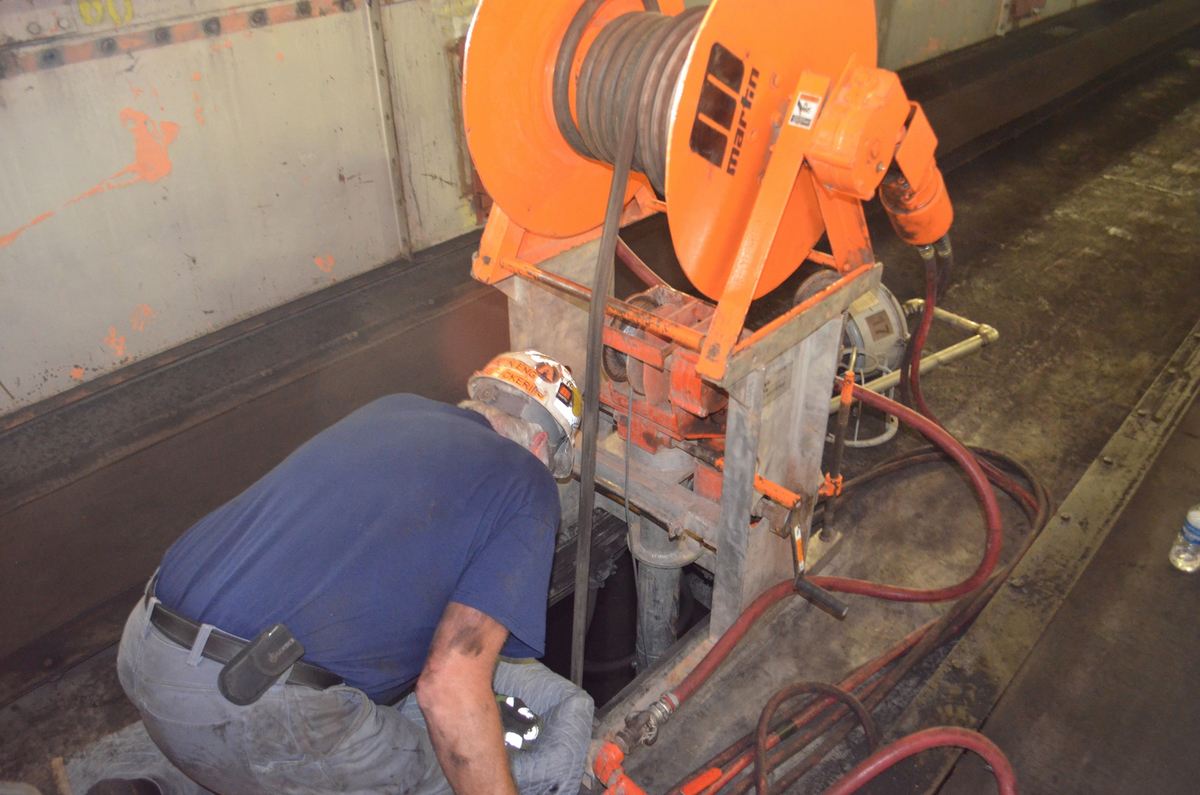Silo Cleaning without Confined Space Entry
Published: February 12th 2014
 [Neponset, IL] – Bulk material handlers now have a proven solution for blocked vessels and plugged discharge chutes, one that will remove build-ups, reclaim lost material and restore design capacity and flow rates. In most cases MartinPLUS® SiloCleaning eliminate the need for confined space entry and hazardous cleaning techniques such as explosives, water and air lancing, typically allowing the material to be recaptured and returned to the process stream.
[Neponset, IL] – Bulk material handlers now have a proven solution for blocked vessels and plugged discharge chutes, one that will remove build-ups, reclaim lost material and restore design capacity and flow rates. In most cases MartinPLUS® SiloCleaning eliminate the need for confined space entry and hazardous cleaning techniques such as explosives, water and air lancing, typically allowing the material to be recaptured and returned to the process stream.
Technicians from Martin Engineering use remote-controlled equipment from the top of the vessel to safely address blockages. With nearly 70 years of experience in solving material flow problems, the company employs highly-trained specialists who are safety-certified to current OSHA and MSHA standards.
Most cleaning projects are performed with the Martin® Heavy Duty Whip, a portable, remote controlled tool that can be lowered into storage vessels through a manhole opening. Powered by compressed air, the Martin® Heavy Duty Whip can be equipped with a variety of flails and cutting edges to knock down accumulated material without damaging storage vessels. Abrasion-resistant steel chain is best suited for most applications, with non-sparking brass chain for combustible materials. Urethane flails can also be employed to protect lined vessels that could be susceptible to damage from metal tools.
“With this technology, the need for confined space entry is greatly reduced,” observed Martin Engineering Silo Sales Specialist Marty Yepsen. “The equipment can be set up quickly outside the vessel, and it’s portable enough to move easily around various bin sizes and shapes.”
The Martin® Heavy Duty Whip uses a modular boom arrangement that extends from 2 meters (7 feet) up to 8.5 meters (28 feet) and can clean vessels up to 18 meters (60 feet) in diameter and 68.5 meters (225 feet) tall from a single central opening of just 450 mm (18 inches). The pneumatic cutting head delivers powerful whip action from the rotating head to remove buildup from walls. The hose reel easily separates from the boom assembly for transportation and set-up in tight spaces.
“There are competing systems that utilize hydraulics, but they tend to be heavy and cumbersome,” said Martin Engineering Territory Manager Jim Densberger. “And they present the possibility of a fluid leak, which could contaminate otherwise-salvageable material. The whip requires no hydraulics; it needs just 90 PSI and 100 CFM, which can usually be supplied from a plant’s existing air system.”
 Densberger added that some pneumatic cleaning systems require very high air volumes, often as much as 1,200 CFM. “To achieve that kind of pressure, the diesel compressor rental alone can be more than $1,000 a day, and the fuel bill for a full day’s work could be half again as much,” he said. “Then there’s the cost to actually do the work.”
Densberger added that some pneumatic cleaning systems require very high air volumes, often as much as 1,200 CFM. “To achieve that kind of pressure, the diesel compressor rental alone can be more than $1,000 a day, and the fuel bill for a full day’s work could be half again as much,” he said. “Then there’s the cost to actually do the work.”
Potential damage to the storage vessel can also be an issue. Some cleaning technologies use the very high pressure to blow air through a hose that’s simply dropped into an access hole at the top of the vessel. At the end of the hose is a tool with a restricted nozzle, which causes the “cleaning head” to thrash about randomly. While this technique works in large blockages, it provides little or no control, and as the head gets closer to the vessel wall, it has an equal chance of taking out a chunk of the silo as it does hitting material for removal.
For extreme blockages where hardened lumps of material have plugged discharge chutes, silo cleaning technicians also use the Martin® Buster, which safely dislodges blockages by the powerful force of expanding CO2 gas. The technique employs non-explosive generators that cause rapid gas expansion to fracture chunks and compacted material, opening the discharge and restoring normal flow.
When bridged or arched material creates a no-flow condition, technicians can rely on the Martin® Drill to bore through tough clogs. The drill’s powerful hydraulic action drives its way through blockages, clearing a pathway at depths up to 45 meters (150 feet).
Martin Engineering’s Silo Solutions are provided as a turnkey service. The company’s fully-equipped teams bring all required equipment and personnel directly to customer sites. Many facilities are able to remain in operation during vessel cleaning, but when conditions require a shutdown, technicians work evenings, weekends or holidays to accommodate customer schedules.
Silo cleaning services from Martin Engineering are backed by the company’s total satisfaction guarantee. If any customer is dissatisfied after one full shift, the crew will return to headquarters without charge.